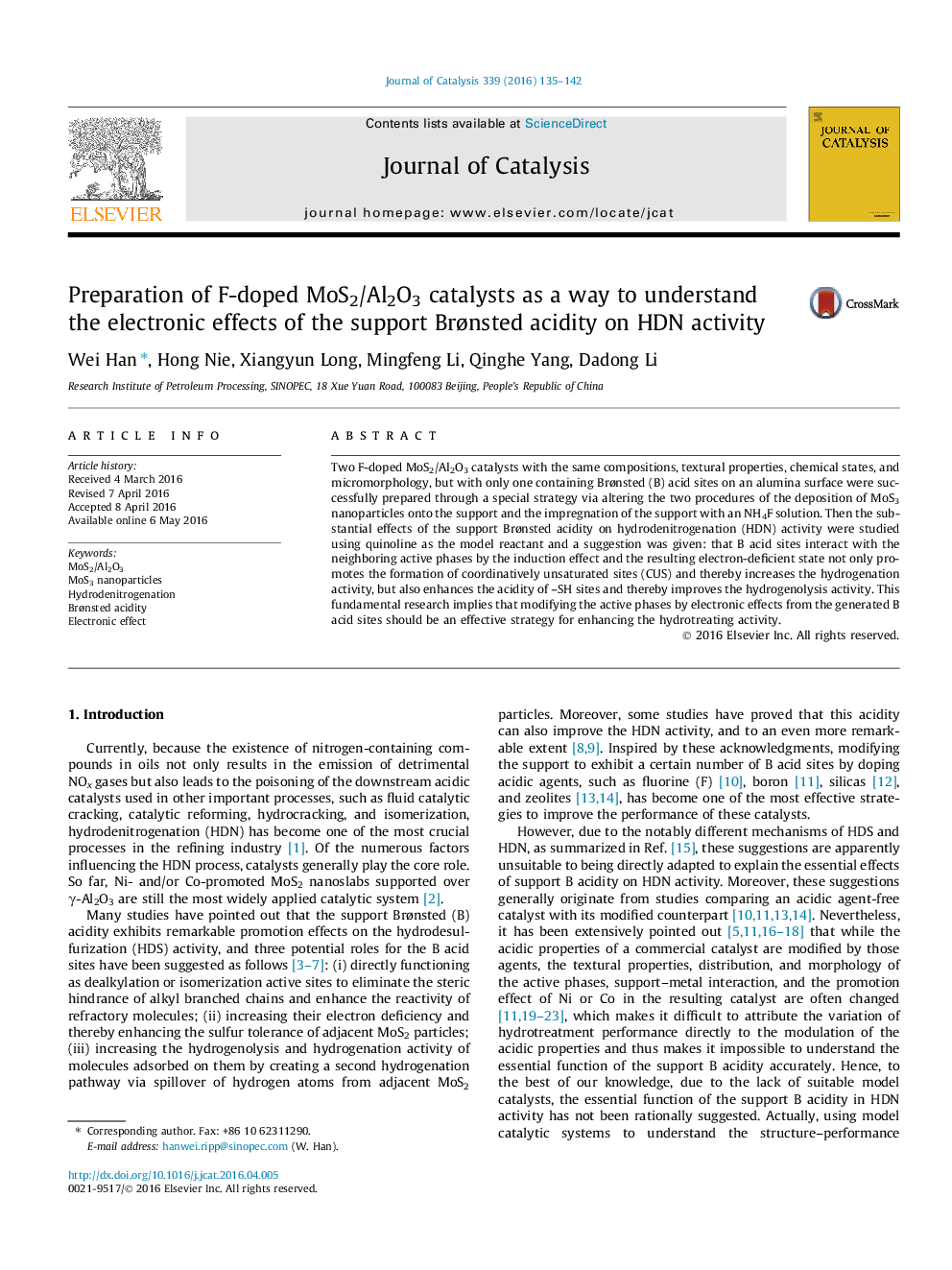| Article ID | Journal | Published Year | Pages | File Type |
|---|---|---|---|---|
| 60573 | Journal of Catalysis | 2016 | 8 Pages |
•A preparation combining deposition of MoS3 with impregnation of NH4F was proposed.•Two F-doped catalysts having the same physical and chemical properties were created.•Only one of the two catalysts contains Brønsted acid sites on an alumina surface.•Hydrogenation and hydrogenolysis are both promoted by Brønsted acid sites.•Electronic effects of Brønsted acidity on hydrodenitrogenation are suggested.
Two F-doped MoS2/Al2O3 catalysts with the same compositions, textural properties, chemical states, and micromorphology, but with only one containing Brønsted (B) acid sites on an alumina surface were successfully prepared through a special strategy via altering the two procedures of the deposition of MoS3 nanoparticles onto the support and the impregnation of the support with an NH4F solution. Then the substantial effects of the support Brønsted acidity on hydrodenitrogenation (HDN) activity were studied using quinoline as the model reactant and a suggestion was given: that B acid sites interact with the neighboring active phases by the induction effect and the resulting electron-deficient state not only promotes the formation of coordinatively unsaturated sites (CUS) and thereby increases the hydrogenation activity, but also enhances the acidity of –SH sites and thereby improves the hydrogenolysis activity. This fundamental research implies that modifying the active phases by electronic effects from the generated B acid sites should be an effective strategy for enhancing the hydrotreating activity.
Graphical abstractFigure optionsDownload full-size imageDownload high-quality image (63 K)Download as PowerPoint slide
